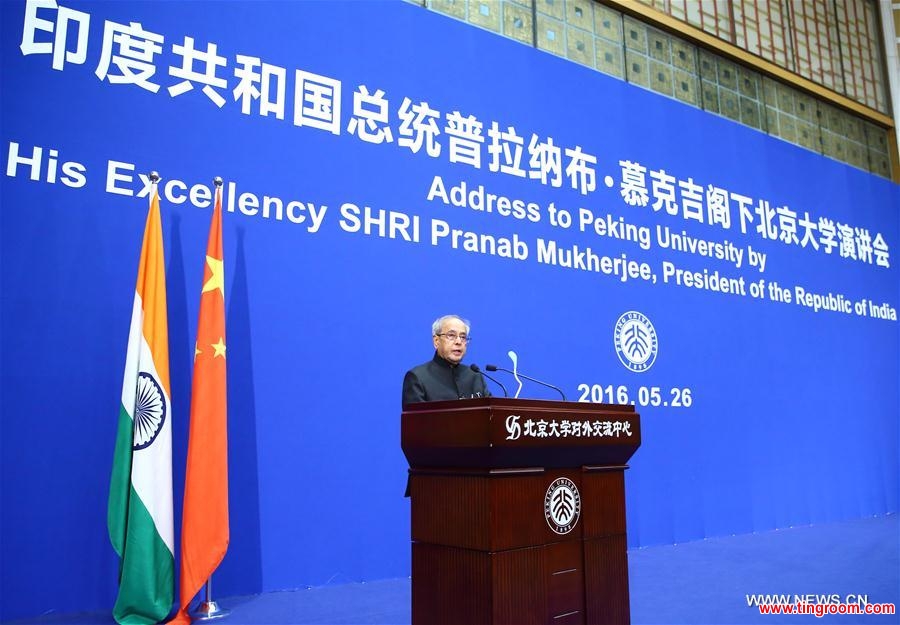-
(单词翻译:双击或拖选)
Indian president Pranab Mukherjee's trip to China. After addressing the China-India Business Forum in Guangzhou to pitch business opportunities for Chinese investors in India, he traveled to Beijing to meet Chinese President Xi Jinping and deliver a speech at Peking University. He spoke about his expectations for the Sino-India relationship and also touched on the sensitive border issues that have caused tensions in the past.
Deepening cooperation.
It's Indian president Pranab Mukherjee's first state visit to China since taking office in 2012.
During a meeting with Chinese president Xi Jinping, both sides praised the bilateral development of recent years, and agreed to boost ties in more areas. While speaking at the Peking University, Mukherjee said that common ground between the two nations has expanded.

Indian President Pranab Mukherjee delivers a speech at the Peking University in Beijing, capital of China, May 26, 2016. (Xinhua/Ding Haitao)
"Our each achievement in infrastructure, movement and energy provide a profound foundation for our exchange and cooperation. We have broadened the common road and learn to manage our differences. We both have opportunities to joint hands on Asian Century."
Sino-India ties were previously boosted during Xi Jinping's India visit in 2014, when 12 agreements were signed.
In 2015, Indian Prime Minister Narendra Modi visited China. Last July, leaders of the Shanghai Cooperation Organization (SCO) passed a resolution to start the procedure of granting India a full membership.
Meanwhile, trade cooperation is also expanding on a large scale.
China-India trade value has increased by 20 times since 2000, and India is becoming a prime market for Chinese companies and investors.
Chinese phone maker Huawei has invested 170 million dollars in a research and development center in India, and Xiaomi has became the country's fifth-largest phone maker and is now also planning to set up a data centre in India.
"This is a huge investment of ours. We want to make our price more competitive. If we can make this a success, we will replicate this model in our European, African and American markets," Lin Bin, president of Xiaomi Technology, said.
Heavy machinery manufacturers have also grasped the price-sensitive nature of the Indian market. Sany has built a solid reputation in India, and its concrete pumps have claimed 30 percent of the country's market share since 2008. Nevertheless, the bilateral trade has heavily skewed towards China. India is now promoting its “Make in India” and “Digital India” strategies. President Mukherjee said he expects more balanced Sino-Indian trade in the future, as India’s IT services and pharmaceutical industry makes further headway in China.
Although the China-India border dispute remains sensitive, continued bilateral exchanges seem to be ensuring a positive future for the relationship.

















